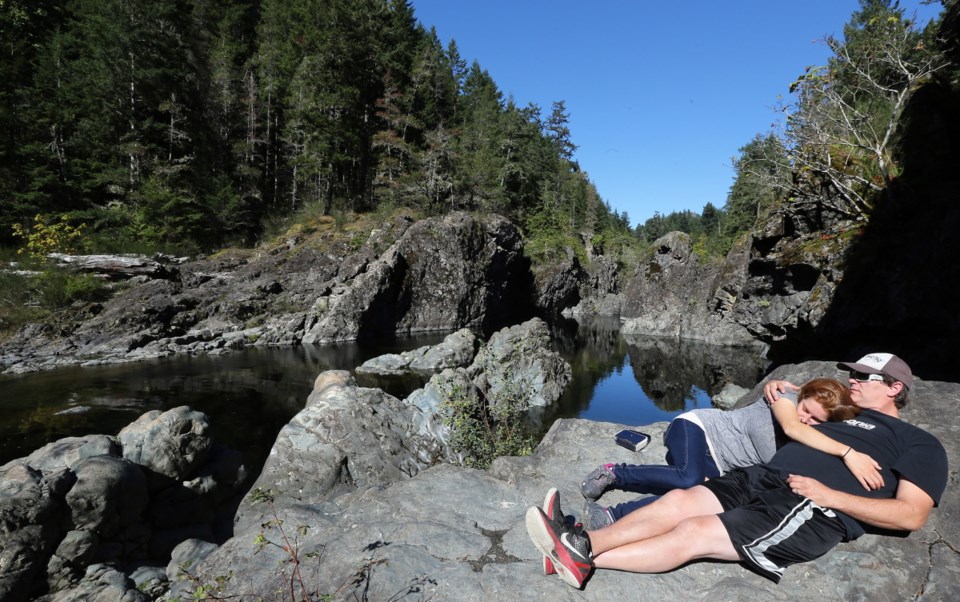The popular campground at Sooke Potholes, closed last year because of financial problems, reopens today under T’Sou-ke Nation management.
Running the facility is one component of the T’Sou-ke Nation’s deep interest in the land and the Sooke River, a spawning ground for spring (chinook) and coho salmon. The area plays a fundamental role in the identity of T’Sou-ke Nation people, who go there for cultural ceremonies and teachings.
The First Nation is running the campground, part of the 157-acre Sooke Potholes Regional Park, under a pilot project for the Capital Regional District.
It will operate under the name Spring Salmon Place, offer 67 sites and be open this season until Oct. 5.
“It’s the start of a good partnership,” T’Sou-ke Chief Gordon Planes said Thursday.
The campground will have four staff, including an overnight caretaker, he said.
Regional district staff have upgraded and tidied the campground in preparation for opening, Planes said.
“It looks really good.”
The campground did not open last year because of financial troubles facing The Land Conservancy of B.C., which had been managing the site. In April, The Land Conservancy, which is under protection from creditors, transferred the site to the regional district as part of its plan to climb out of $8 million in debt.
The T’Sou-ke Nation will take care of campground operations, including camper registration, visitor services and maintenance. The regional district is responsible for maintaining infrastructure such as water tanks, buildings and shelters.
Beyond running the campground, Planes said everyone must work together to preserve the environment for future generations, particularly at a time of climate change.
“The Sooke Potholes is known to our people as KWL-UCHUN [Spring Salmon Place], the place where the spring salmon give themselves back to Mother Earth — these are the teachings of our ancestors,” Planes said.
“We are the salmon people and our language follows the salmon route. We are directly connected to the resource — it is part of our identity.
“The spring salmon have taken care of us since time immemorial,” Planes said. “It is time for us to return that favour — not only First Nations, but all of us.”
In the future, education programs may be offered, he said.
Regional district parks chairwoman Susan Brice said goals include offering a high-quality camping experience and sharing information about the cultural significance of the area.
The park attracts swimmers who enjoy its clear fresh water, deep pools and potholes.
“Glacial action during the last ice age 15,000 years ago is responsible for the formations, as the moving, melting ice packs stripped the surface area and carved a path deep into the natural bedrock,” says a B.C. Ministry of Environment website.
“Huge boulders carried along by the rushing river became lodged, were swirled against the canyon walls and consequently carved out the potholes that can be seen today.”



